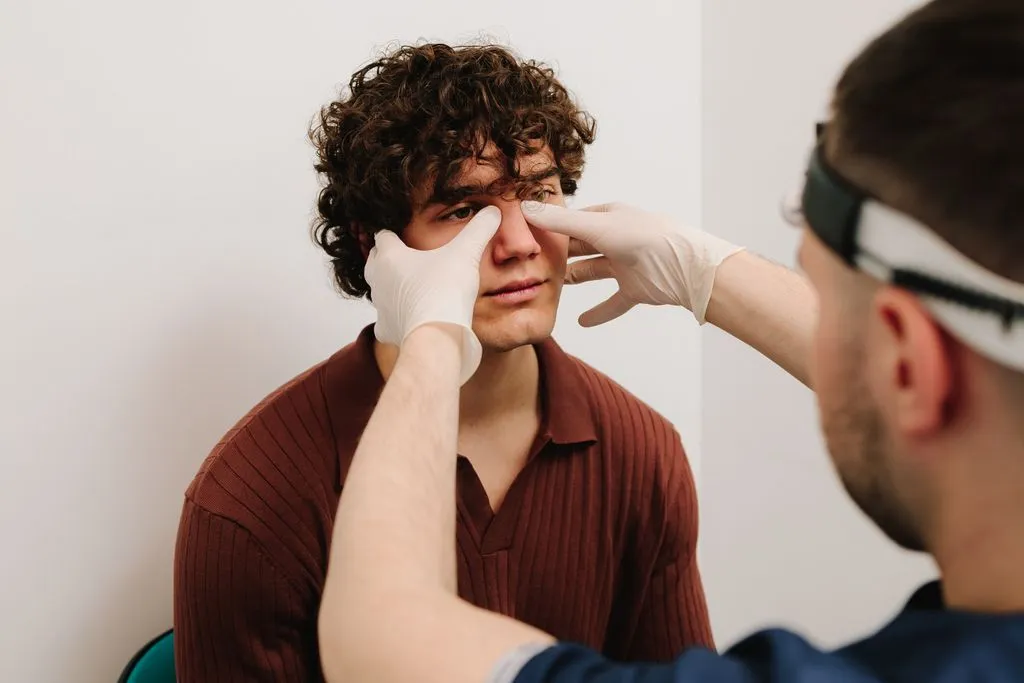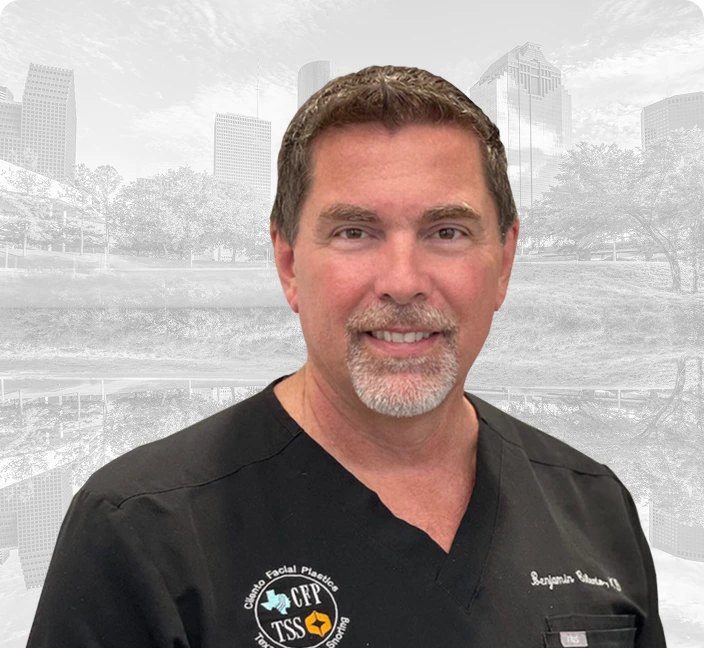Step 1: Rest and Recovery
The very first step to a speedy recovery is ensuring that you get sufficient rest. Because balloon sinuplasty is less invasive, most patients can resume daily activities within 48 hours after surgery. However, you must allow your body a minimum of 7 days to completely heal and feel rested. Refrain from household chores and lifting heavy objects, avoid activities that make you sweat or raise your heart rate, and do not operate heavy machinery during your rest period.
Step 2: Managing Pain and Swelling
Some degree of pain, swelling, and discomfort in the nose is expected after a surgical procedure. While these sensations are inevitable, there are specific measures that you can take to minimize their effects.
- If you feel any congestion, lie down with your head elevated above your chest. This helps in minimizing the uneasiness.
- Use cold compresses to relieve the nasal swelling. Be sure to apply them gently without excessive pressure, as it may further increase the pain.
- Avoid wearing any eyewear as it may put pressure on your nose, adding to the pain.
- Take the prescribed painkillers to subdue the pain. Be sure not to self-medicate, as it may cause side effects.
Step 3: Hydration
Keeping your body hydrated is one of the most effective ways of speeding up your recovery process. A generous water intake keeps your nasal passages moisturized, which prevents congestion and flushes out toxins from your body. The increase in water intake also minimizes the swelling.
Step 4: Nasal Care
The nose is highly sensitive after surgery, so it is crucial to take utmost care of it. Stay away from excessively rubbing, blowing, or touching the nose. Use saline rinses or sprays to gently remove any buildup or mucus in the nose. Avoid allowing water to enter the nostrils during bathing. Try not to sneeze through your nose—use your mouth instead if you feel one coming on.
Step 5: Avoiding Irritants and Alcohol Consumption
Certain substances cause high levels of irritation to the nose and hinder the healing process. One must take note to avoid them during post-op balloon sinuplasty recovery.
- Toxic fumes: These carry chemicals that irritate the nose and make you sneeze.
- Dust particles: They make their way into the nasal passage and cause itchiness in the nose.
- Tobacco or nicotine: Smoking promotes tissue scarring, which can delay and disrupt the healing process.
- Alcohol: It dilates the nasal blood vessels, which can cause an increase in post-surgery swelling and bleeding.
It is advisable to steer clear of these substances for about a week after surgery.
Step 6: Gentle Exercise
Since a balloon sinuplasty isn’t as invasive, there is not much constraint on the patient’s physical activity. However, limiting strenuous movements for 1-2 weeks post-surgery is still suggested. If you wish to engage in any activity, stick to light and moderate exercise that does not increase your heart rate. You can try walking, stretching, or chair yoga, as these do not cause excess stress to any body part.
Step 7: Healthy Diet
A balanced intake of nutrients can greatly contribute to a healthy post-op recovery. When planning your post-nasal surgery diet, be mindful of including soft foods, as hard-to-bite food items can cause tension in the nose and disrupt the healing process. The following items are recommended for those undergoing post-op care.
- Juices
- Smoothies
- Boiled or steamed vegetables
- Eggs
- Soft fruits
- Oatmeal
- Soup
- Stew or broth
- Yogurt
- Porridge
- Jello
Step 8: Follow-up Care to Receive Your Doctor's Instructions
It is important to attend scheduled follow-up appointments after the surgery. These help your doctor regularly check your healing progress and suggest any improvements if needed. Ask your provider about your care plan and attend appointments diligently.
Step 9: Monitoring Symptoms
During your balloon sinuplasty recovery period, keep track of your sinus symptoms and report any unusual changes to your doctor. This monitoring will help you have a regulated recovery and get immediate aid for resolving any issues.
Benefits of Balloon Sinuplasty
Minimal Bleeding and Discomfort
Balloon sinus dilation is designed to gently open blocked nasal passages using a small balloon. During the procedure, a saline solution is often used to flush the sinuses, which helps clear out debris and promote healing. Typically performed under local anesthesia, this technique results in minimal discomfort for patients. Because balloon sinus dilation expands the sinus openings without cutting or removing tissue, it helps prevent bleeding and reduces the overall trauma to the nasal passages. As a result, the experience is much more comfortable compared to traditional sinus surgery.
Long-Lasting Symptom Relief
Patients suffering from nasal congestion due to chronic sinusitis (sinus inflammation) often find significant, long-term relief following balloon sinuplasty. By improving drainage and ventilation of the sinuses, this procedure addresses the root causes of persistent symptoms. Many individuals experience fewer flare-ups of sinus inflammation and report sustained improvement in breathing and nasal health, making it an effective option for managing chronic sinus conditions.
Speedy Recovery
Most patients who undergo balloon sinuplasty benefit from a speedy recovery because the procedure targets blocked sinus passages without extensive tissue damage. After the procedure, patients are often prescribed medications to reduce nasal congestion and control sinusitis symptoms during healing. This minimally invasive approach allows many individuals to return to normal activities quickly, supporting a successful recovery with less downtime than traditional surgeries.
Less Invasive Compared to Traditional Surgery
Balloon sinuplasty is a minimally invasive procedure that relieves sinus pressure by gently expanding the sinus openings rather than removing tissue. Unlike endoscopic sinus surgery, which can involve cutting nasal tissues, balloon sinuplasty preserves these structures, reducing trauma and discomfort. The procedure typically takes only a few hours, allowing patients to experience effective symptom relief with less recovery time and fewer risks.
Your Wellness Matters: Reach Out to Texas Sinus & Snoring
Undergoing any form of nasal surgery is a significant decision that mustn’t be taken lightly. Your wellness is a serious concern requiring the best quality care. At Texas Sinus & Snoring, you get a promise to receive dedicated and personalized care for your sinuses. Our team consists of well-educated and experienced doctors who will provide tailored solutions to restore your health. Connect with our renowned doctors today and kickstart your wellness journey! From surgical preparation to balloon sinuplasty costs, our team will help guide you through it all.
FAQs
What can individuals expect after undergoing a balloon sinuplasty procedure?
Like any nasal surgery, balloon sinuplasty has some commonly reported side effects, which typically subside with time. You can expect:
- Congestion
- Bleeding
- Nasal tenderness
- Mild discomfort
- Swelling
Your healthcare provider will provide you with fixes for these side effects.
How do you clean your nose after balloon sinuplasty?
After getting balloon sinuplasty, one must avoid blowing the nose to clean it. Instead, you may use prescribed saline rinses to maintain the cleanliness of your nose. These rinses flush out mucus and debris without disrupting the healing process.
How long should I rest after balloon sinuplasty?
People with a sedentary lifestyle can resume their daily activities after a rest period of 48 hours post-op. However, strenuous activities must be avoided for one week.
Are there specific irritants to avoid during post-balloon sinuplasty recovery?
We recommend avoiding the following irritants, as exposure to them may hinder your healing process:
- Toxic chemicals
- Smoke
- Alcohol
- Dust
- Steam
- Contaminated or chlorinated water
What can I eat after balloon sinuplasty?
Maintaining a balanced diet is the key to a speedy and healthy recovery. The post-op diet must contain easy-to-chew, soft foods with adequate nutrition. You may choose to consume things like:
- Steamed vegetables
- Soup
- Cottage cheese
- Eggs
- Fish
- Soft fruits
- Smoothies
- Juices
Does keeping the head elevated reduce recovery time?
Yes, keeping the head elevated after balloon sinuplasty can help reduce recovery time and promote healing. Elevating the head helps decrease swelling and congestion, which are common issues in patients recovering from chronic sinus infections. During the first few weeks after the procedure, your healthcare provider may prescribe antibiotics or recommend using a nasal spray to prevent infection and support healing. By following these steps, many patients experience significant improvement in their symptoms and enjoy long-lasting relief.




